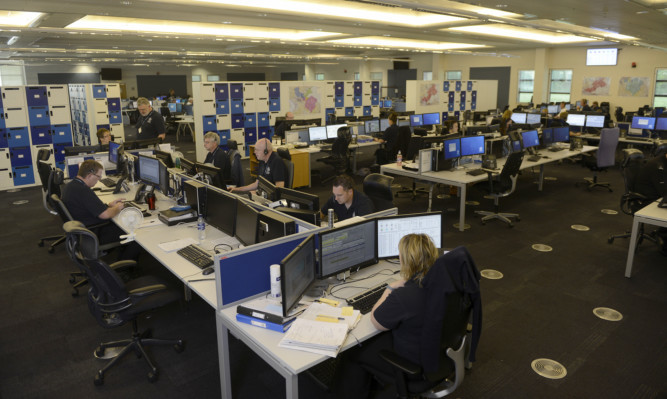Police Scotland now has enough staff to meet demand in its control rooms but it has come at a cost as its projected savings have been slashed by nearly two-thirds, the police inspectorate has found.
Staff in Police Scotland’s Contact, Command and Control (C3) centres have increased by 7.5% since the start of the year, partly in response to the fatal tragedy on the M9 in which a couple lay undiscovered for three days despite a sighting of their wrecked car being reported to C3.
HM Inspector of Constabulary Scotland (HMICS) found call centres were left understaffed in the drive to make savings through staff redundancies.
HM Inspector Derek Penman told Holyrood’s Justice Sub-Committee on Policing that staffing has now “stabilised”, but called for an assurance that it will not slip back when call centres in Inverness, Aberdeen and Dundee are merged.
John Bainbridge, HMICS associate inspector, said: “In terms of the C3 division, the actual staff numbers in total terms on January 1 2015 was 1,450, on April 1 it was 1,460, July 1 it was 1,494 and October 1,563. So there is a rising trend in staff numbers.”
Mr Penman said: “Our view is that the staffing has stabilised for the current volume they have.
“What we need to have is an assurance that when call volumes come in from the north that they will have sufficient capacity to manage that.”
He added: “The journey of savings to people is difficult to track for us.
“If you go back to the outline business case there were savings of £18 million identified, and that was before the decision was taken to the single force.
“When they started designing it they said it would be £8.6 million of savings, potentially.
“Currently, the estimates are around £6.8 million of savings – which is 212 staff and £800,000.
“Our difficulty in this is actually trying to track the number of staff that are there and the number that have left the organisation, and also how the financial savings are accounted for.”
He continued: “What we found was that at critical stages of the project, when for example the Stirling centre closed and moved into Bilston Glen, and when Glenrothes closed, there were insufficient staff available at that time.
“That was precipitated by allowing staff to leave in those areas.”
